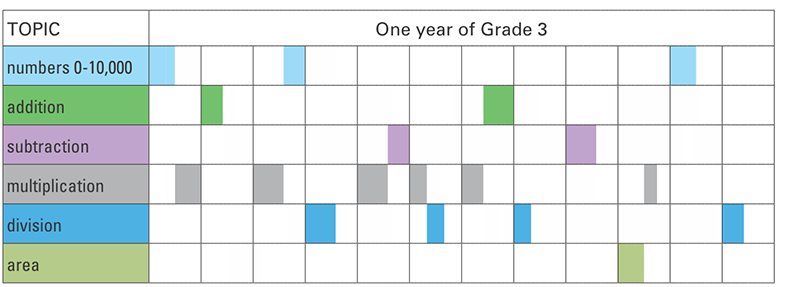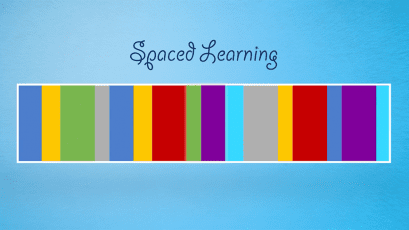Great Ideas
Make a Change for Good: Part 2
Using a spaced learning approach to modernize elementary math instruction
This article is the second of a five-part series on using what we know to modernize elementary math instruction:
- Part 1: What does effective math instruction look like today?
- Part 2: this article – spaced learning in modern math
- Part 3: Adopt a Piagetian approach to teaching math facts and concepts
- Part 4: Why math language counts
- Part 5: Fostering classroom discourse
In the previous article I introduced the following four “influences or actions” that come from John Hattie’s (2017) groundbreaking research. These four influences score high in terms of an effect size and are relatively easy to implement at minimum or no cost. I will focus on the first one in this article: spaced learning.
Why Spaced Learning in Math?
Historically, publishers have driven the math curriculum by producing materials that become adopted as the primary resource for teaching math in schools. The traditional approach in the US has been to “clump” content, which is another way of saying “teaching to the standard.” In this massed-learning approach, key content is covered all at once, which then requires significant time dedicated to practicing those concepts and skills throughout the remainder of the year. This eats into valuable instruction time – and with only 180 school days, that is precious time that American schools simply can’t afford.
There is now growing evidence that suggests we need to “space” key content over time. This spaced-learning approach allows us to learn faster and assists us in remembering key ideas and skills. In fact, the National Center for Education Research (2007) recommends exposing students to key ideas at least twice during a period of weeks or months.
View this one-minute animated video for further explanation of a spaced-learning approach.
Introducing the Spaced Learning Approach from ORIGO Education on Vimeo.
Why would we want to consider spacing our learning over time, rather than teaching the standard to mastery? Because the practice of spaced learning has an effect size of 0.71! That’s close to two years of growth for every year of schooling. The question should really be, “Why wouldn’t you?” This approach is particularly powerful when teaching basic facts strategies. In my experience, the development of fact fluency is too often treated as an “event” that takes days, rather than as a “process” that can take many months. Effective mathematics programs are designed where topics are distributed over time.
Fluency is a process – not an event!
The ORIGO Stepping Stones Structure: Spaced Learning Curriculum in Practice
ORIGO Stepping Stones is an innovative elementary math program that uses a spaced-learning approach. The key ideas and skills have been identified and placed in smaller blocks over time. The chart below shows an example of how a selection of topics are spread out across the year. There are 12 modules in the year and each module has 12 lessons. The solid blocks represent a series of lessons within the module that focuses on a topic such a multiplication.

ORIGO Stepping Stones 2.0, Grade 3
“Teaching to the standard” is much like cramming for a test – as it is heavily reliant on memorization. As a student, I rarely retained information beyond the needs of the test. A spaced learning approach gives students multiple opportunities to truly understand the ideas, by revisiting and relearning them. Additionally, “space-learning” programs such as ORIGO Stepping Stones require fewer hours for practice, so more instruction time is freed to help students make vital connections among concepts. It’s no wonder that this approach supports close to two years of growth for every year of instruction.
Click here to read the next article in this series.




